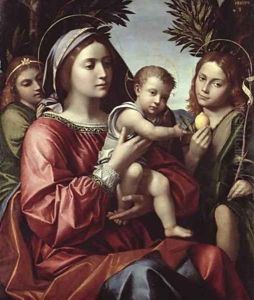Paolo (Il Cavazzola) Morando Paintings
Paolo Morando, also known as Il Cavazzola, was an Italian painter of the Renaissance, born in 1486 in Verona, Italy. His contributions to the art world are marked by his unique blend of Northern Italian Renaissance and High Renaissance styles, making his work an important bridge between the two artistic movements. Cavazzola's early life and training are not extensively documented, but it is known that he was influenced by his Veronese contemporaries as well as by the works of artists from the Venetian school, such as Giorgione and early Titian. His nickname, 'Cavazzola,' which has become almost synonymous with his artistic identity, is derived from his father's profession as a cobbler ('cavazza' means 'shoe' in the local dialect).
Cavazzola's artistic career was relatively short-lived, as he died at the young age of 36 in 1522, yet his legacy is significant. His works are characterized by a remarkable attention to detail, a rich color palette, and a mastery in depicting light and shadow, which added a dramatic intensity to his religious and mythological scenes. Among his most notable works are the altarpieces for the churches in Verona, including the 'Madonna and Child with Saints' for the church of San Bernardino and the 'Martyrdom of St. George' for the church of San Giorgio in Braida. These works exemplify his ability to convey deep spiritual themes with emotional depth and technical precision.
Despite his early death, Cavazzola's influence persisted, particularly in Verona, where he contributed to the development of the Veronese school of painting. His work reflects the transition of Italian art from the early Renaissance into the more complex and expressive techniques of the High Renaissance, making him a pivotal figure in the history of Italian art. Today, Cavazzola's paintings can be found in various museums and collections, where they continue to be studied and admired for their beauty and historical significance. His ability to capture the human condition, combined with his innovative use of color and light, has cemented his place as one of the noteworthy artists of the Italian Renaissance.
